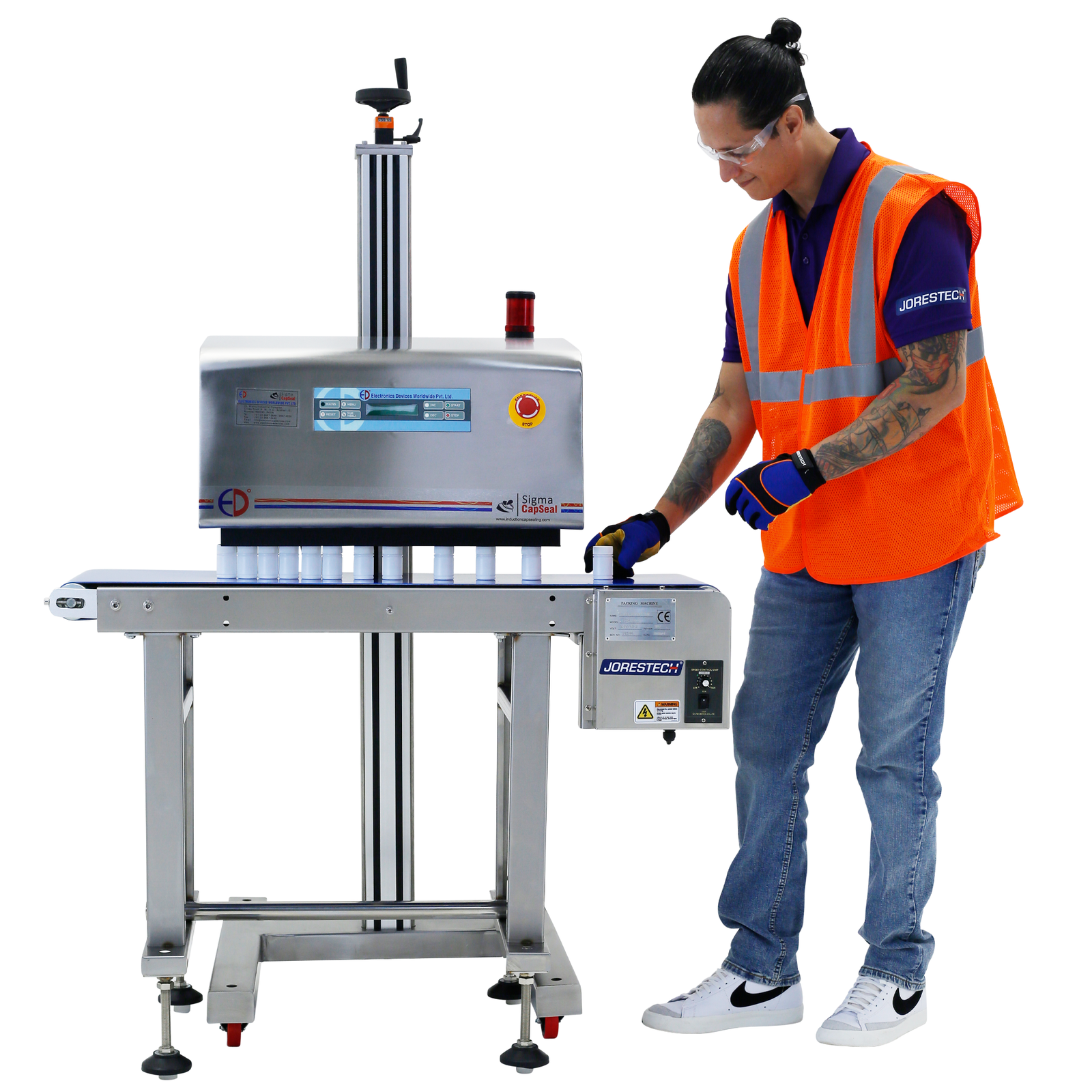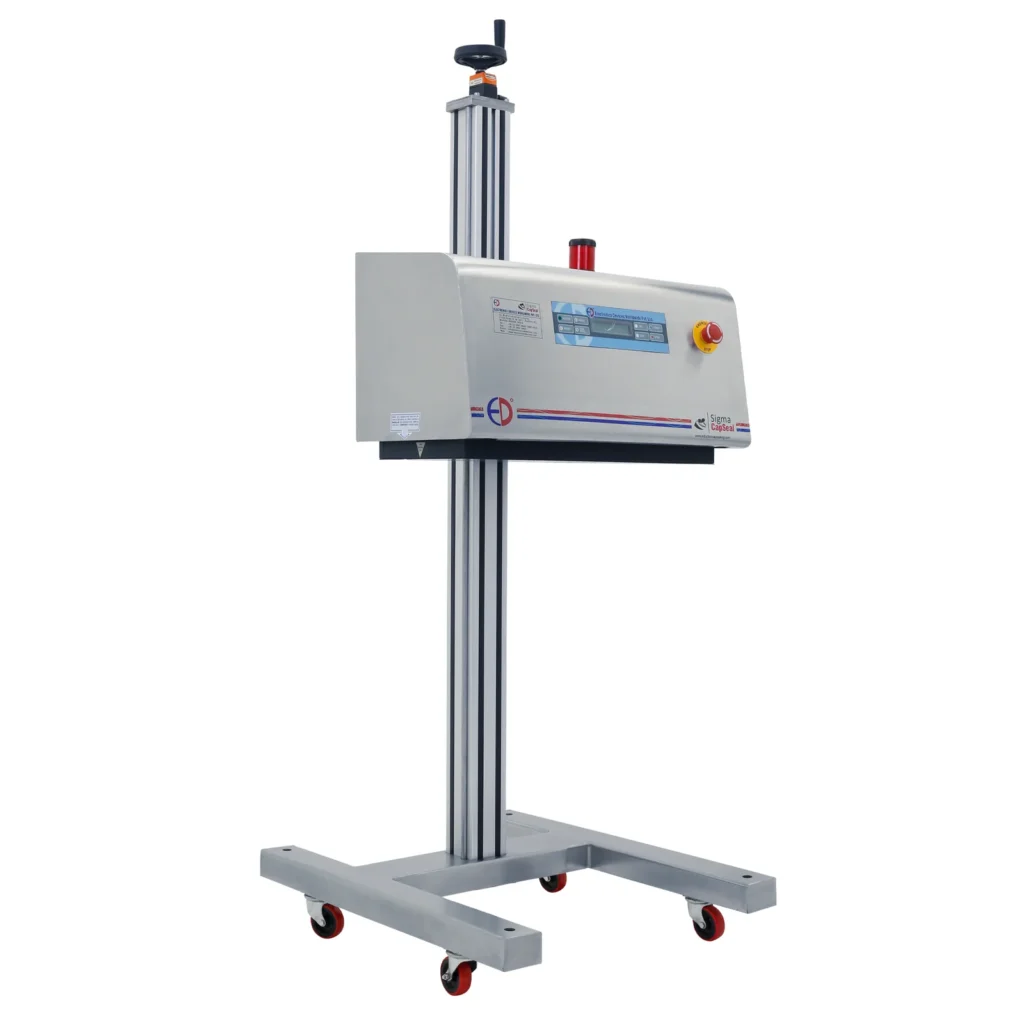Inline Induction Sealers
In the realm of industrial packaging, efficiency and precision are paramount. Inline induction sealers stand out as indispensable tools, offering high-speed, continuous sealing solutions for large-scale manufacturing operations. This comprehensive guide explores everything you need to know about inline induction sealers, from their functionality to their applications, benefits, and maintenance.

Understanding Inline Induction Sealers
Inline induction sealers are specialized machines integrated into production lines to provide automated, high-speed sealing of containers with foil-lined caps or seals. These robust devices are designed for continuous operation, offering unmatched efficiency and reliability in large-scale manufacturing environments.
How Do Inline Induction Sealers Work?
- Continuous Operation: Containers with foil-lined caps or seals are fed into the sealing machine via a conveyor belt as part of the production line.
- Induction Heating: The sealer generates an electromagnetic field, inducing a current in the foil liner of the cap as containers pass through.
- Sealing Process: The induced current heats the foil liner, causing the sealant layer to melt and bond to the container’s rim.
- Cooling and Sealing: Once the sealant cools, it forms a secure, tamper-evident seal, ready for further processing or distribution.

Key Features of Inline Induction Sealers
- High Throughput: Capable of sealing hundreds or thousands of containers per hour, ensuring maximum productivity.
- Automated Operation: Integrated with conveyor systems for continuous, hands-free operation, minimizing downtime.
- Advanced Controls: Digital interface with customizable settings for precise sealing parameters.
- Versatility: Accommodates various container sizes and types, offering flexibility for different packaging needs.
- Tamper-Evident Seals: Provides visible evidence of tampering, enhancing product security and consumer trust.
Applications of Inline Induction Sealers
- Food and Beverage: Seals containers of liquids, sauces, condiments, and other perishable products for retail distribution.
- Pharmaceuticals: Provides tamper-evident seals for medicines, vitamins, and other healthcare products to ensure product safety.
- Chemicals: Ensures leak-proof seals for containers of cleaning agents, industrial chemicals, and hazardous materials.
- Cosmetics: Maintains product integrity and prevents leakage in skincare, haircare, and beauty products.

Benefits of Using Inline Induction Sealers
- Enhanced Productivity: Streamlines the packaging process with high-speed, continuous sealing, improving overall efficiency.
- Consistent Sealing Quality: Ensures uniform and reliable seals across all containers, reducing the risk of product loss or contamination.
- Tamper-Evident Seals: Provides visible evidence of tampering, enhancing product security and consumer confidence.
- Flexibility: Accommodates various container sizes and types, offering versatility for different packaging needs.
- Cost-Effectiveness: Offers a cost-effective sealing solution compared to manual or semi-automated methods, reducing labor costs and increasing throughput.
How to Choose the Right Inline Induction Sealer
Consider the following factors when selecting an inline induction sealer:
- Production Volume: Ensure the machine can handle your expected production volumes effectively.
- Container Compatibility: Verify that the sealer is compatible with the sizes and types of containers you use.
- Power and Efficiency: Choose a model with adjustable power settings to accommodate different sealing requirements.
- Conveyor Integration: Ensure compatibility with your existing conveyor system for seamless integration into your production line.
- User Interface: Opt for a machine with an intuitive interface and digital controls for ease of operation and monitoring.
Maintenance and Care Tips
- Regular Cleaning: Keep the sealing head and other components clean to prevent residue buildup and maintain optimal performance.
- Check for Wear: Inspect the machine regularly for signs of wear and replace parts as needed to ensure consistent sealing quality.
- Calibration: Periodically calibrate the machine to ensure accurate sealing parameters.
- Proper Maintenance: Follow the manufacturer’s recommended maintenance schedule to prolong the lifespan of the machine and prevent downtime.
Conclusion
Inline induction sealers are indispensable assets for businesses seeking maximum efficiency and productivity in their packaging operations. By understanding their functionality, features, and maintenance requirements, manufacturers can leverage inline induction sealers to streamline their production processes, ensure product integrity, and meet the demands of today’s competitive market. Whether you’re in the food and beverage industry, pharmaceuticals, chemicals, or cosmetics, an inline induction sealer offers unmatched reliability and performance, helping you achieve your packaging goals with confidence.


control card & display card price
sorry this website is just for learning not sell any parts.
yes